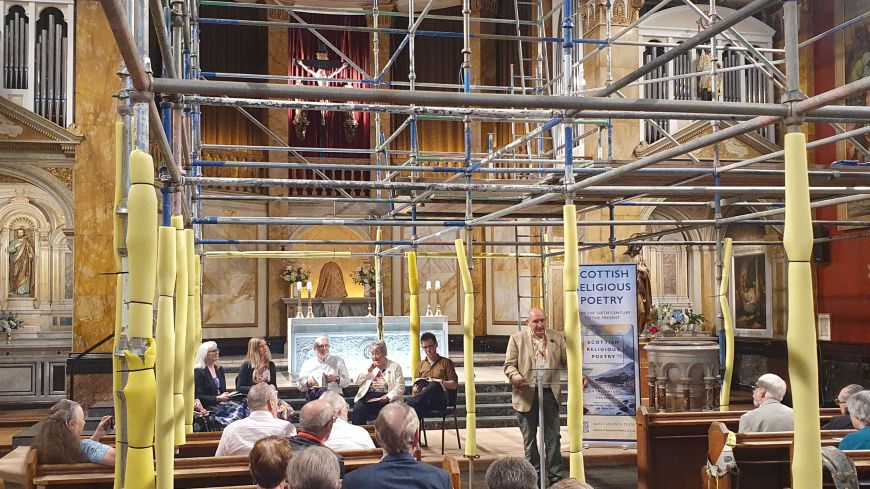
The book ‘Scottish Religious Poetry’ was first published in 2000; now, almost a quarter of a century on, the anthology has been revised and expanded. This event celebrated the printing of the new edition.
While including much of the original material, the relaunched version ensures that a greater number of women are represented, as well as a broader range of Christian denominations and traditions.
In the first half hour, we were treated to hearing some of the newer compositions that have been added to the anthology – together with examples from the poets’ other works.
Sam Tongue pointed us in the direction of fresh poetic voices that we might not have otherwise discovered – he read both from the anthology, and also his own separate compositions – particularly in defence on the animal kingdom, as seen through a theological lens.
Marion Morrison, who hails from Barra, enchanted us with memories of the Madonna & Child statue (some 40ft tall – known locally as ‘Our Lady of the Sea’), that was erected on the island in protest against the rocket-range installation introduced in the 1950’s. Rather than being transfixed in each other’s gaze, Mother and Son together look out to sea, from where any danger might potentially come.
Reflecting the diverse inclusivity of the new book, James McGonigal shared with us from his reflections on ‘The Desert Mothers’. We also heard from his reflections and reminiscences following a pilgrimage to St Ninian’s Cave at Whithorn, and Mass being celebrated inside it.
In the discussion between the poets that followed, it was clear that was what important to the artists was the reimagining of the inherited tradition – by making it alive in new ways – especially through the individual impact it has had for them, personally. There was something about putting the bones on theology – making the characters real once more. Marion Morrison had earlier given us a reflection on Mary Magdalene, that arose out of her visit to the Holy Land.
It was asked in the concluding Q&A session whether a poetry competition, focused on Christianity, could ever possibly hope to attract entrants aged under 21. All seemed to agree that their experiences evidenced a definite spiritual thirst in the younger generation, though maybe – nowadays – with only glancing references to recognised religion. However, as was stated by the panel, a poem’s impact often lies more “in its power than its piety.”
The event finished at 4.00pm
Scottish Religious Poetry, Sunday 11th August, Church of the Sacred Heart

